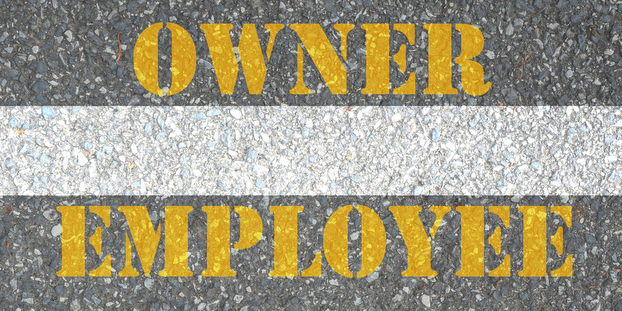The following great post comes to us from the big brains at Prairie Capital Advisors. You may also want to join Rocky Fiore, COO of Prairie Capital Advisors and Dan Kenary, co-founder and CEO of Harpoon Brewery for an informative webinar about why craft brewers should consider an ESOP as their ownership transition alternative.
Recent M&A activity has resulted in some independent craft brewers being acquired by big beer companies causing confusion among craft beer drinkers. Is the beer they drink really from an independent craft brewer? To eliminate some consumer confusion, the Brewers Association released their independent beer seal to be used by craft brewers. Independent craft brewers can use the seal on their packaging to promote their independence. To use the seal, craft brewers must meet certain criteria including independence — meaning that less than 25 percent of the craft brewery is owned or controlled by a beverage alcohol industry member that is not itself a craft brewer. Breweries must also sign a licensing agreement that indicates that if they are no longer an independent craft brewer, they cannot use the seal and will remove it from future packaging. “In the end, ownership matters,” said Jim Vorel from Paste Magazine.
As craft brewers mature and look forward to the future of their business, there are several ownership transition options they can consider to allow them to remain independent.
- Transition of ownership to a family member
- Management buyout (MBO)
- Sale to employees through an Employee Stock Ownership Plan (ESOP)
- Combination of two or more of the above options
These alternatives move the ownership in very different ways; in addition, each has its own possibilities and limitations. The alternative that is right for your brewery can only be determined after careful analysis of several factors.
Timing – When do you plan on transitioning ownership? This significantly affects which options are available to you.
Financing – What sources of financing are available? Does your successor have the cash to purchase the company?
Leadership – Do you have a strong management team in place — people who are capable of running the business after you’re gone? Is your management infrastructure stable enough to attract banks and buyers?
Level of uniqueness – How unique is your business? Does its success depend on the talents of your managers or employees?
Value expectations – What do you think your company is worth? What is it really worth?
Risk – What is your risk comfort level? How much capital do you expect to reinvest in the business to maintain and grow market share?
A good exit strategy will take all of these factors (and more) into consideration. The right choice can only be made after carefully weighing the pros and cons of each alternative as well as addressing your company’s overall capital structure to determine whether it can support each possibility. It is also important to remember that ownership transition alternatives are fluid; for example, a business owner might sell a portion of his or her business to management and a portion to an ESOP.
Several craft brewers have chosen an Employee Stock Ownership Plan (ESOP). Harpoon, New Belgium, Odell, Left Hand, Switchback, Deschutes and, most recently, Modern Times Beer have all chosen to maintain their independence and reward their employees with ownership in the business.
The main reasons craft brewers should consider ESOPs:
Cultural Familiarity – craft beer employees want their passion and commitment reflected in the brand. Most craft brewers already have engaged employees that are excited about the future of their brewery, and employee ownership is a natural evolution in craft beer culture.
Independence – An ESOP allows owners to monetize their years of hard work while keeping the brewery in the hands of the individuals who helped build it.
Controllable Liquidity – An ESOP can provide partial liquidity to one or several shareholders while still retaining control of the business
Tax-efficient Structure – ESOPs are very attractive tax-favored alternatives to virtually all other types of ownership transition strategies.
Employee Attraction & Retention – An ESOP provides all eligible employees an equity interest in the brewery.
Your exit strategy can develop and change over time. Once you have a complete understanding of every alternative, you can make an informed decision that has the highest likelihood of achieving your personal and business goals. By planning well in advance, you’ll not only have more options available to you, but you’ll also have the flexibility to modify your exit strategy as needed — and as a result, the peace of mind of knowing that the future of your business is well taken care of.
Rocky Fiore is the chief operating officer and managing director at Prairie Capital Advisors Inc.






Patrick Lynch, CPA, CFE says
Appreciate the article. I would love to hear your thoughts on a “mini-IPO” under Regulation A+.